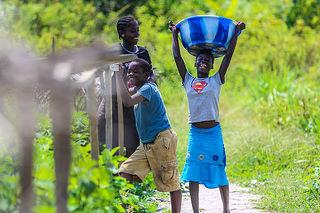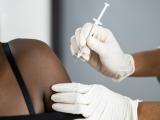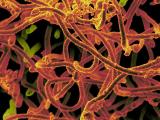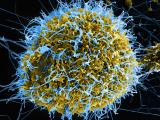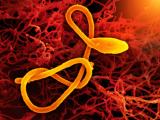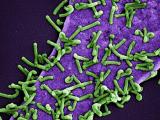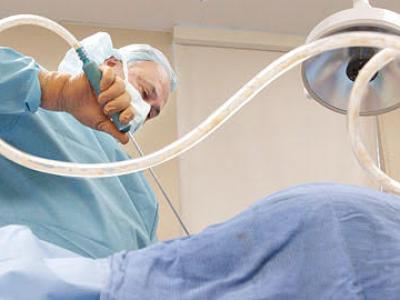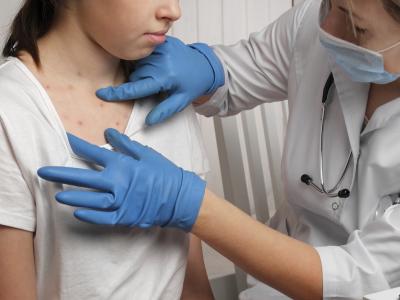Ebola case numbers took another steep tumble in Guinea and Sierra Leone last week, with only two new lab-confirmed infections reported, the third straight decline and the lowest weekly total since March 2014, the World Health Organization (WHO) said today.
After several months of stalled progress against Ebola in Guinea and Sierra Leone, case numbers have now fallen into the single digits, though health officials are warning that more cases could result from recent high-risk exposures.
At a media briefing in Geneva yesterday, Bruce Aylward, MD, MPH, the WHO's assistant director-general in charge of Ebola outbreak response, said further progress in the response is real, but he cautioned against unrealistic expectations and said additional cases and even flare-ups are expected in the weeks and months ahead.
The two countries each reported a single case last week, down from seven between them the previous week. No new cases were reported from Liberia, and for the first time in 3 weeks, no new health worker infections were reported.
The WHO said the decrease comes alongside response refinements, which include strengthened contact tracing and case investigation capacity. It added that the improvements have increased confidence that any remaining transmission chains will be better controlled, and stressed that stepped-up efforts are crucial due to the risk of further transmission in the weeks and months ahead.
Of 2,000 contacts that are still under monitoring in the two countries, a small number have not been traced or have been lost to follow-up, the WHO warned.
Case details
Guinea's sole case was a 28-year-old woman who is a registered contact linked to a known chain of transmission in Conakry. She was lost to follow-up for a period of time, during which she traveled to Sierra Leone and back to visit a traditional healer before her Ebola infection was identified.
The WHO said her travel history, which included Forecariah district in Guinea and Kambia district in Sierra Leone, could involve a number of high-risk contacts.
Sierra Leone's case-patient is one of hundreds of contacts reported in connection with an earlier case in Tonkolili district, a person who had traveled to the area from Freetown. The new case-patient is a family member who helped care for the index patient. The WHO said 40 people are at high risk of infection because of contact with the index case. Overall, 800 people in Sierra Leone are still under monitoring, most of them in Tonkolili.
Overall, the number of confirmed, probable, and suspected cases in the three most affected countries has reached 27,862, including 11,281 deaths, according to the WHO. The number of healthcare worker infections remains at 880 illnesses, 512 of them fatal.
A view from the field
Aylward said response operations have improved, due to separate but similar pushes in Guinea and Sierra Leone over the past several weeks. For example, he said health officials are establishing forward operating bases in response to flare-up areas, despite conditions caused by frequent torrential rains. The countries have also improved their care of contacts. "That's an incredibly important step for ensuring cooperation," he noted.
Responders have a better grip on transmission chains, and contact tracing has progressed to knowing specific names of missing contacts and searching for the individuals. "It's a very different response than a month ago," said Aylward, who has recently been in outbreak villages in all three countries. "Any way you look at it, the response is tighter, and countries are going in the right direction."
Aside from "irrational exuberance," another risk is silent transmission in areas where surveillance isn't good, he said. "We are still getting some surprises."
Overall, the response is shifting to third phase, with a more formal rollout expected for September, Aylward said, adding that the next major goals will extend through 2016 and will aim at stopping all remaining transmission chains and managing residual risks, such as disease reemergence and care for survivors.
Regarding recent news about the effectiveness of the VSV-EBOV candidate vaccine in Guinea's ring trial, Aylward said the step won't be a game changer but rather a response enhancer. It will likely play a role in managing contacts and making conditions safer, he said. However, Aylward noted that more study is needed to see if vaccine use yields any herd benefits.
Survivor clinical meeting
In other Ebola developments, clinical experts, researchers, and disease survivors are meeting in Freetown this week to discuss medical issues related to aftereffects from the virus and to identify the needs for a comprehensive care plan for those who are recovering.
In a statement on the meeting, which began on Aug 3 and runs through Aug 7, the WHO said clinicians will be sharing their expertise on clinical management of Ebola survivors, with the goal of building consensus on protocols and best practices.
Researchers will be discussing data collection and identifying key questions, especially regarding health problems during longer-term recovery and residual viral loads. After its clearance from the bloodstream, the virus is thought to persist in immune-protected areas such as the eyes and testes, which has implications for virus transmission well after recovery.
Also on the agenda is a biobanking system for clinical samples; lab and ethics experts will be on hand to discuss the idea, including how to safely preserve the samples.
Diagnostic test EUA
Meanwhile, OraSure Technologies, Inc., based in Bethlehem, Pa., announced on Aug 3 that the Food and Drug Administration has granted an emergency use authorization (EUA) for its rapid Ebola test.
The company said in a press release that EUA is for use with fingerstick and venous whole blood. It said the test can yield a positive sample in as early as 4 minutes, with negative results available by 30 minutes. The test requires only two steps and is shelf stable across a range of storage conditions.
See also:
Aug 5 WHO situation update
Aug 4 WHO media briefing audio file
WHO Ebola survivors clinical meeting background
Aug 3 OraSure press release
